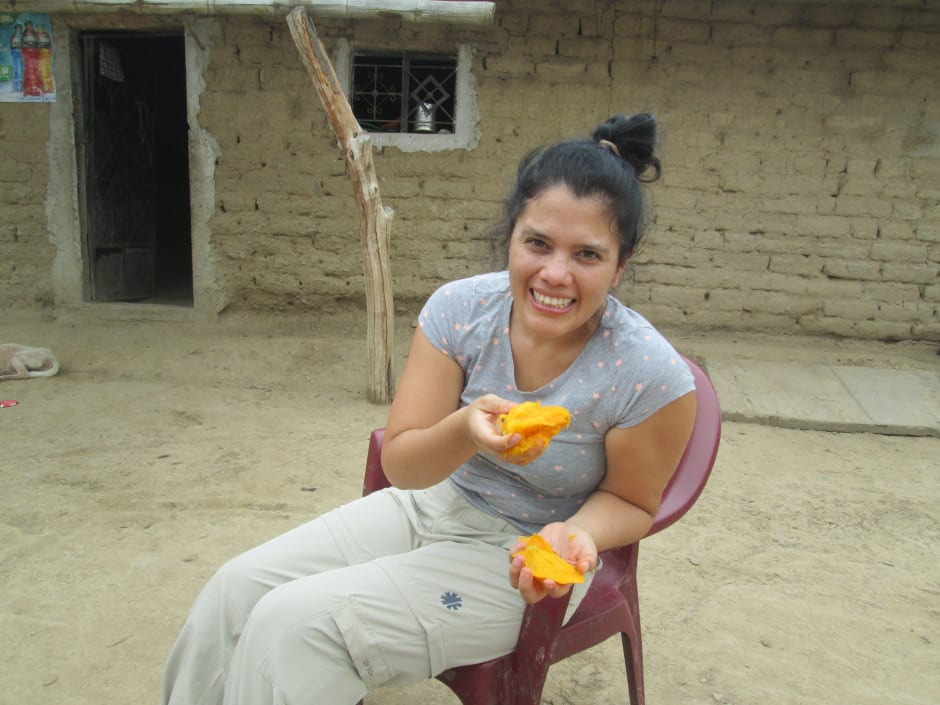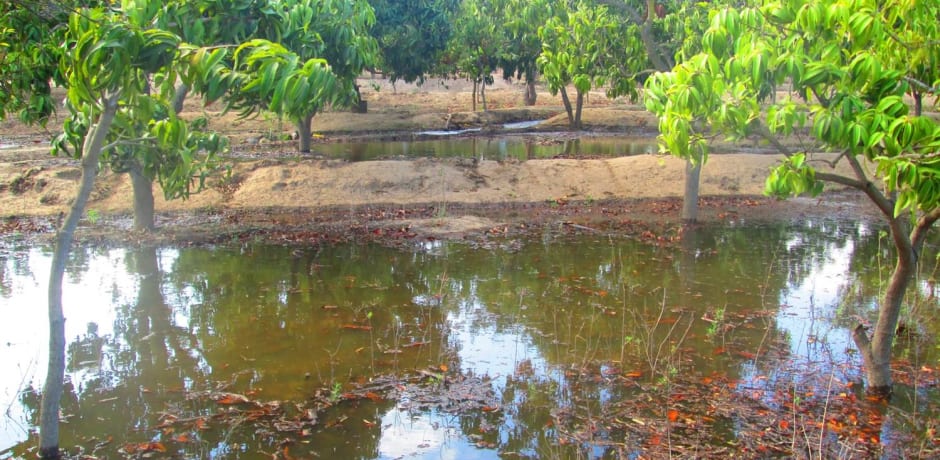
UvA-anthropologist: ‘Engineers want to solve problems, that's good. But there are also things to be learned from farmers'
Behind the mangoes in the Albert Heijn supermarket, lies an enormous water shortage in the drought-prone exporting countries, like Peru. Modern solutions to save water offer little room for the traditional irrigation methods of small farmers, says UvA anthropologist Carolina Domínguez Guzmán.
Where do mangoes come from?
‘Most mangoes imported by the Netherlands come from Brazil, Mexico and Peru. In Peru, production is concentrated in three valleys on the desert coast, including the Motupe Valley that my research is about. The trade is in the hands of large-scale export companies, while more than half of the mango production in Peru is in the hands of small farmers whose farms are on average three hectares or less. Peru has the smallest average plot size for export mangoes of Latin America.’

What was the starting point of the research?
‘I was part of a research project, funded by science funder NWO, concerning the local struggles of smallholder farmers in the face of the growing water crisis produced by the intense export. When I started doing fieldwork, I came to realize that in order to grapple with the complexities of everyday irrigation practices, it is necessary to use methods that allow writing about water and smallholder farmers in ways that do not reduce their realities to social science dualistic thinking, for example winners or losers, or by dominant technoscientific narratives that technology and science is the only logic way to understand and develop sustainability. I discovered that much water research focuses on water efficiency and water productivity. But these concepts mean different things to small farmers in countries like Peru.’
What is meant by water efficiency and water productivity?
‘The water footprint assessment, is a logic that measures the amount of water needed for the production of goods and services. These can be mangoes, garments, but also companies and countries. This footprint is meant to create awareness of the amount of water used, important for consumers, for instance in the Netherlands. But that quantification method is not the only way to look at how to save water. It seems to differ from the way farmers argue wise water use and do irrigation, namely by flooding their fields with water. These basin-like fields are called pozas, which are typical for the Motupe Valley, where different types of crops are grown in one poza. Local engineers see this as a waste of water and encourage mango plantations to use modern technologies such as drip irrigation.’

Why are the pozas not a waste of water?
‘For generations on the coast of Peru, very dry seasons have alternated with very wet ones due to the natural phenomenon of El Niño. By flooding the fields, the groundwater is also replenished. The roots of the mango trees go so deep that they can draw from the groundwater in dry years. By growing multiple crops in the pozas, biodiversity is higher. In addition, the farmers welcome the muddy water that comes from the Andes. Some farmers consider this water is nutritious for the trees because it contains minerals and sediments. But for drip irrigation, the water has to be very clean, otherwise the pipes and drippers get clogged. My point, and I believe the farmers too, is that the pozas are efficient in their own way, which you cannot only describe using quantitative system like the water footprint. In my research I want to make room for that. Right now, engineers come and tell farmers how to take care of their trees, they encourage monocropping and small, frequently-pruned trees that are planted in rows, spaced in short intervals. That is different from how smallholder farmers do it now; their logic favors tall trees and deep roots, the trees have most probability to survive in this desertic zone, they benefit from the groundwater that is infiltrated thanks to their pozas. Engineers want to solve problems, that is good. But there are also things to be learned from farmers – which should be taken seriously.’
In your thesis, you write that modern and non-modern are not fixed categories or practices, and that it is precisely the mix that can enrich water research. What do you mean by that?
‘The small 'traditional' farmers produce mangoes that can compete with the quality you can find in the Albert Heijn supermarket. A nice mango, with a red colour and beautiful 'shoulders', as we call the shape of the mango. It's fascinating how farmers use traditional methods to produce a mango that fits into a modern supermarket. Mangoes have also helped the people of the Motupe Valley to earn an income. In 2000, when the export of mangoes took off, everyone started to grow mangoes. Even farmers who had no rights to the water system began to grow mango seedlings illegally and travelled kilometers to get water. When the trees were grown up, they did get access to water and water rights, because the water authorities could not deny them water anymore. What I show in the thesis is that there is no pure modern and no pure non-modern way, but it is always a mix. A challenge for water researchers is to embrace these complexities and create more space for the stories and realities that are now overlooked.’
What do you see as a solution?
‘As social scientists, we should not avoid the complexities and non-coherences of any given problem. In my conversations with water scientists, local engineers, farmers and export company’ managers, I noticed that people often use the same term while referring to different things, as with water efficiency. These equivocations give us an idea how to deal with diversity, and value the differences. We need to slow down the speed at which new concepts and techniques are implemented in argricultural fields such as in the Motupe Valley.’
Carolina Domínguez Guzmán hopes to receive her doctorate on 24 November for her thesis ‘Doing Irrigation in a Non-modern World: Techno- and water-diversity in the mango orchards of Northern Peru'. The PhD starts at 16.00 hrs and takes place in the Aula, Old Lutheran Church.

